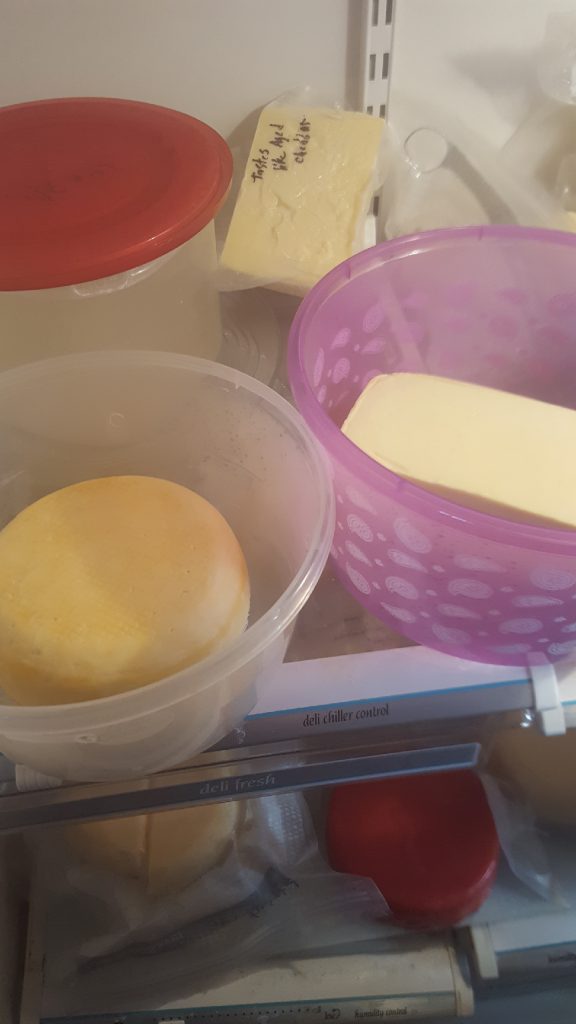Life with Culture
When I first begin making cheese, the magic trick of turning milk into cheese was captivating. Then when I discovered I can get milk for $2 a gallon, I thought, “that is cool I can make all the cheese I want”! When I cut into that first wheel and tasted that first cheese, I was so disappointed. What did I do wrong?
So, I made more and more and it was okay, but not great.
What is the answer?
At that time, there was a local dairy called Cozy Cow and they had milk for $5 a gallon. Ten dollars for two gallons! Highway robbery. I bought two gallons and made some Jarlsberg. The difference was night and day.
I knew I needed better milk.
Making cheese is easy, making good cheese is hard! But making great cheese takes practice and luck, but most of all it takes great milk.

I embarked on a milk journey that has lasted years. Milk straight from the cow becomes the best cheese. Or straight from the sheep, but they are much harder to come by,and that is another tale.
So let’s start with milk straight from the cow, not my cow. I live in town and my neighbors would not like my cow. For the sake of argument let’s take that milk from the cow and make cheese!
What should we make?
What recipe should we use?
Do we follow it exactly or tweak it?
These are the questions I struggle with as an amateur cheese maker.
I have been fortunate enough to get some good teaching and make some great friends in the quest for cheese. Last week, I was in a class with my friends when we started talking about fresh raw milk and how you can treat it differently.
First off, we never use calcium chloride at least in cheese(I have added to brine). Next, it was brought up that you can use half as much culture. I had heard that before, but it never clicked or became something I thought about while making cheese. Could I do this?
The class that day was the making of “Guido’s hard Italian Cheese”. I have made this before with limited success, but that was the assignment. With four gallons of raw milk in the frig, “Let’s Go!”
The Test: Make the same recipe, under the same conditions, at the same time and taste test in three weeks(Guido’s only takes 3 weeks to mature). In one pot use the recommended amount of culture and in the other use half the amount. I have to tell you now, this thought actually scared me. This milk is precious, liquid gold, but this was science. In the name of science, sacrifices would have to be made.
To my great surprise, both cultures set up well. In fact the pot with less culture set a better curd. To make sure I could keep them straight and tell them apart, one wheel was pressed round and the other became a brick. Both look and smell like cheese, both weigh exactly 2 lbs. Game On!

Monday April 27th marks the end of the first week. They are in the frig and looking fine.
Wednesday May 6th, 9 days have passed since I last checked the cheese. Tonight I gave it a quick once over with some brine. I don’t want any mold spoiling the flavor.
Join me in 10 days and we will see what we get!

Wednesday May 13, I cut into both wheels to find a soft, subtle cheese, ripe for a good cracker. The wheel with half the culture actually tasted better to me, but my wife thought the full culture wheel turned out better.
Not sure what I was hoping for? A dramatic difference, maybe? I guess we will eat some cheese! I’m going to repackage most of it to age longer, the quest for a true answer still eludes me.
Thanks for Reading.
Leave a Comment